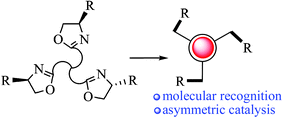The development and application of chiral trisoxazolines in asymmetric catalysis and molecular recognition
Abstract
The development of suitable ligands that upon coordination to a metal facilitate enantioselective reactions or are able to selectively recognize a molecule are fundamental endeavours in organic chemistry. Chiral ligands that contain one or two oxazoline groups have been extensively studied and applied successfully to many metal catalyzed reactions. Accordingly, the development and application of chiral trisoxazolines has received increasing attention in the last decade. This tutorial review covers the synthetic methods for the preparation of chiral trisoxazolines, the application of chiral trisoxazolines in asymmetric catalysis and molecular recognition.


 Please wait while we load your content...
Please wait while we load your content...